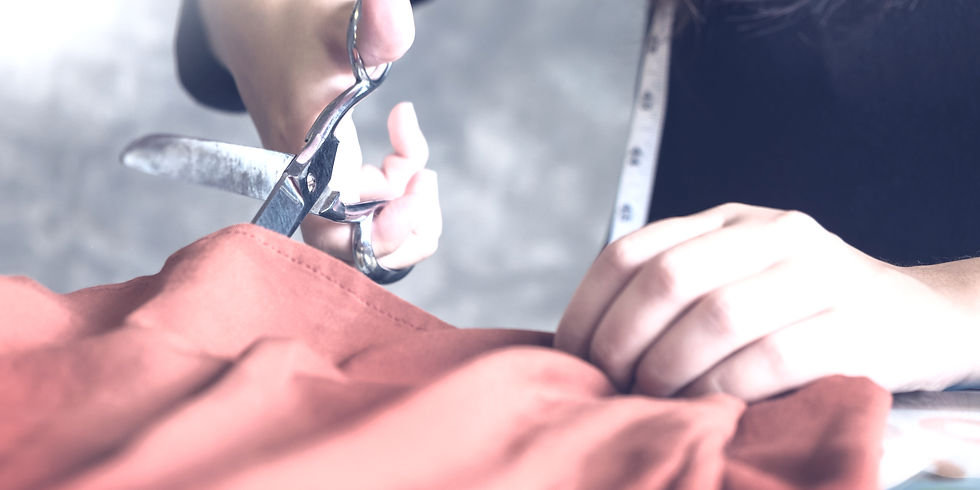The Great Cutting Debate: Fabric Shears vs. Rotary Cutters
- needlesaymore24
- Sep 2
- 2 min read
Updated: Sep 15
In our current social media landscape, rotary cutters have become the trendy tool showcased in countless sewing videos. But are they really the magic solution they appear to be? Today, I'm breaking down the real pros and cons of both cutting methods to help you make mindful choices about your sewing tools.
Pros:
Greater Control: The design of traditional fabric shears allows for precise movements around curves and corners
Ergonomic Comfort: Quality shears are designed to fit comfortably in your hand for extended cutting sessions
No Additional Tools Required: Unlike rotary cutters, you don't need a special cutting mat or ruler
Longevity: A good pair of fabric shears can last decades with proper care
Versatility: Can cut through multiple layers of fabric with ease
Precision: Allows you to see exactly where you're cutting as you go
Cons:
Time-Consuming: Can be slower for cutting straight lines and large pattern pieces
Hand Fatigue: Opening and closing the blades repeatedly can cause hand strain during long cutting sessions
Learning Curve: Proper technique takes practice to avoid lifting fabric while cutting

Rotary Cutters: The Modern Alternative Pros:
Speed: Excellent for quickly cutting straight lines and large pieces
Smooth Edges: Creates clean, precise cuts on straight lines
Stability: When used with weights, prevents fabric shifting during cutting
Multiple Layers: Can cut through thin materials efficiently
Cons:
Required Pressure: Demands significant downward force which can cause hand and wrist strain
Additional Tools: Requires investment in cutting mats and rulers
Safety Concerns: Extremely sharp blades require careful handling and storage
Less Precision on Curves: More challenging to navigate intricate pattern shapes
Not Suitable for Thick Fabrics: Struggles with multiple layers of heavyweight fabrics
Deceptive Learning Curve: Despite appearing easy in videos, requires practice to master

As demonstrated in my video, here's my quick method for perfect interfacing pieces every time:
Cut your fabric pieces first using your preferred method
Lay the cut fabric pieces directly on your interfacing
Trace around them with a rotary cutter for thin materials like interfacing
No measuring or re-tracing patterns needed!
This approach combines the precision of using your original pattern pieces with the speed of a rotary cutter for thin materials.
When to Choose Each Tool
Best for Fabric Shears:
Detailed pattern pieces with curves and notches
Thick or multiple layers of fabric
Precision work where accuracy is paramount
When you need to see exactly what you're cutting
Best for Rotary Cutters:
Straight lines and large pieces
Thin materials like interfacing
Multiple layers of quilting cotton


Comments